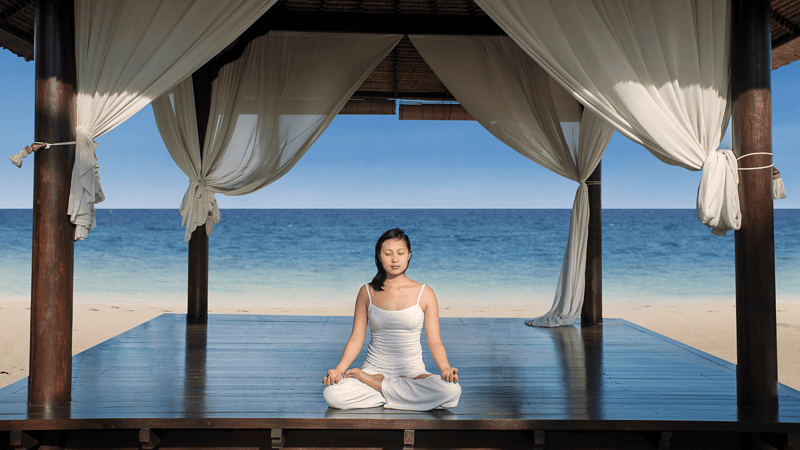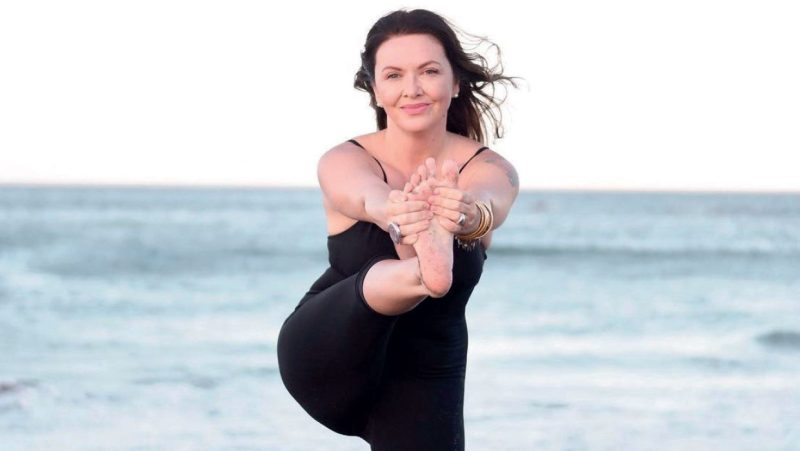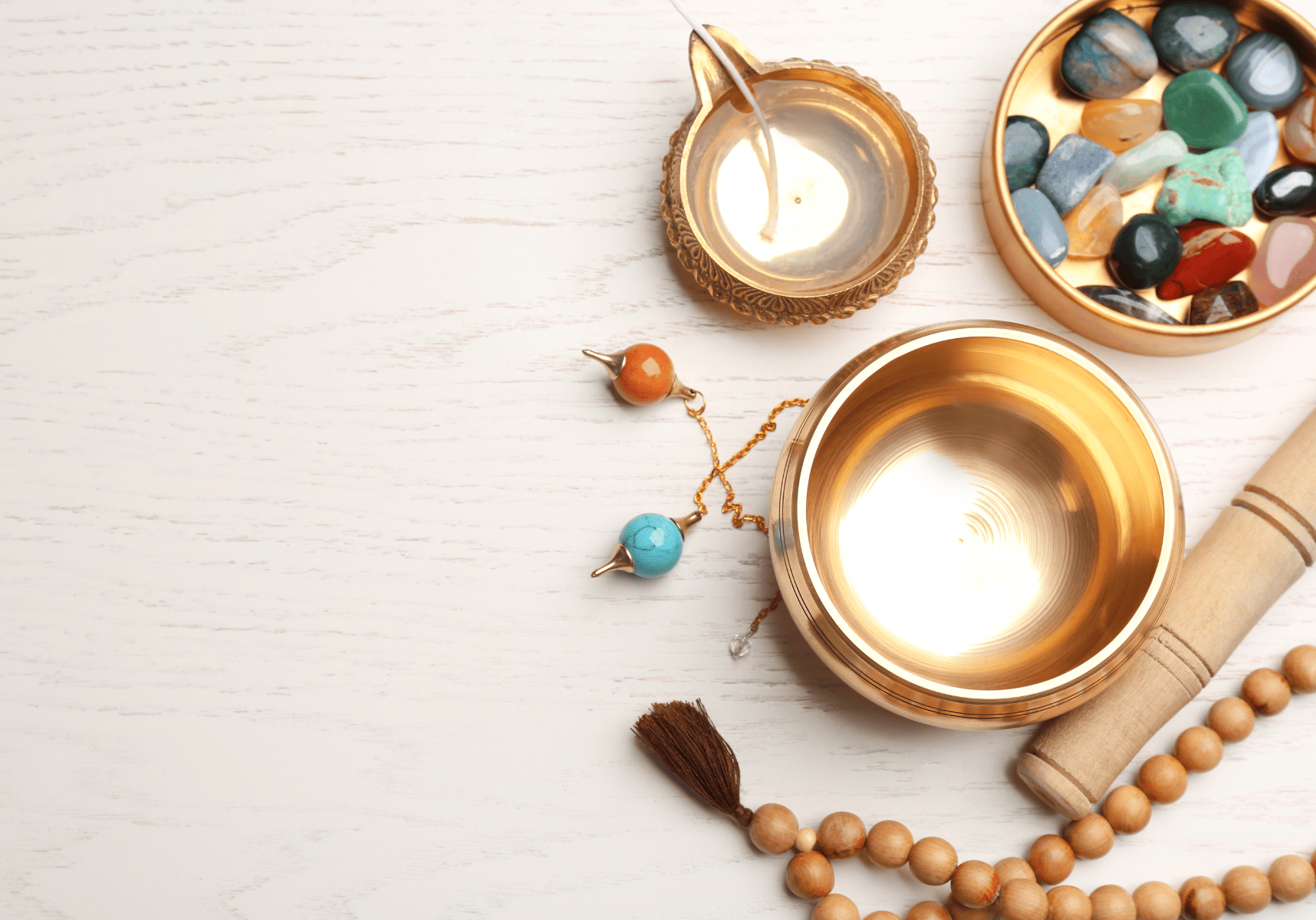
Sound Healing Restorative Yoga Escape
Winter Yin: Sound Healing Yoga for Health and Harmony - By Laurel Smith
Reading time: 4 minutes
In the northern hemisphere the winter season officially begins on December 21st and lasts in some regions for 3 months. Winter is a transitional period from the darkest days of the year to the light and rebirth of spring. Winter, closely associated with the water element in Chinese Medicine, is a time for deep reflection, rest and restoration.
Winter in Traditional Chinese Medicine is a good time to focus on the health of the kidneys and urinary bladder. These two organs are deeply associated with the water element. Sound healing therapy uses vibration or sound to create better health. In Vibrational yin yoga we tap or massage or use sound instruments such as body tuning forks to stimulate acupuncture points while practicing yoga. The below routine offer practitioners a gentle sound healing restorative escape to help manage the stresses of the winter season. Enjoy!
Reclining Butterfly Activitating the Lower Dantian
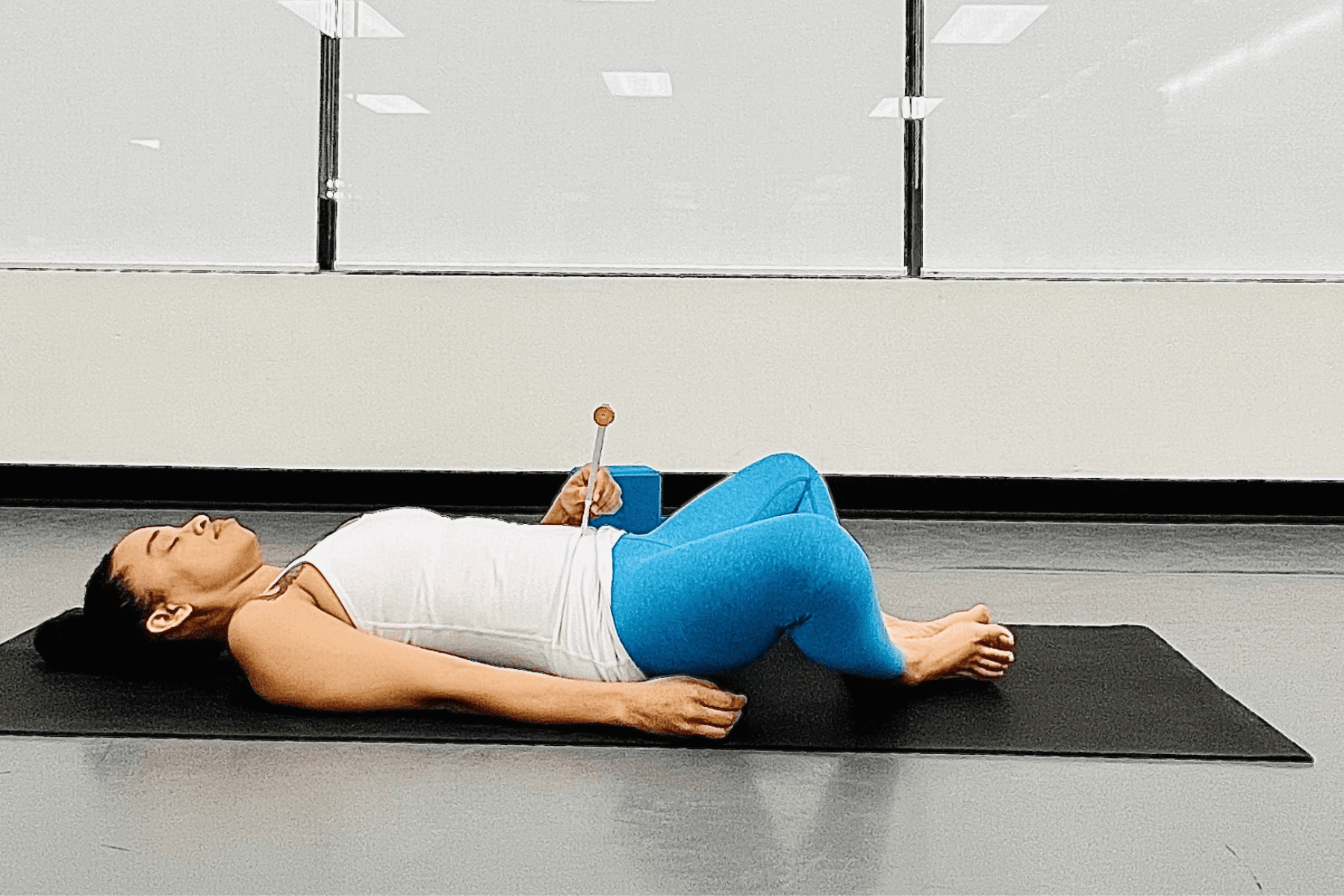
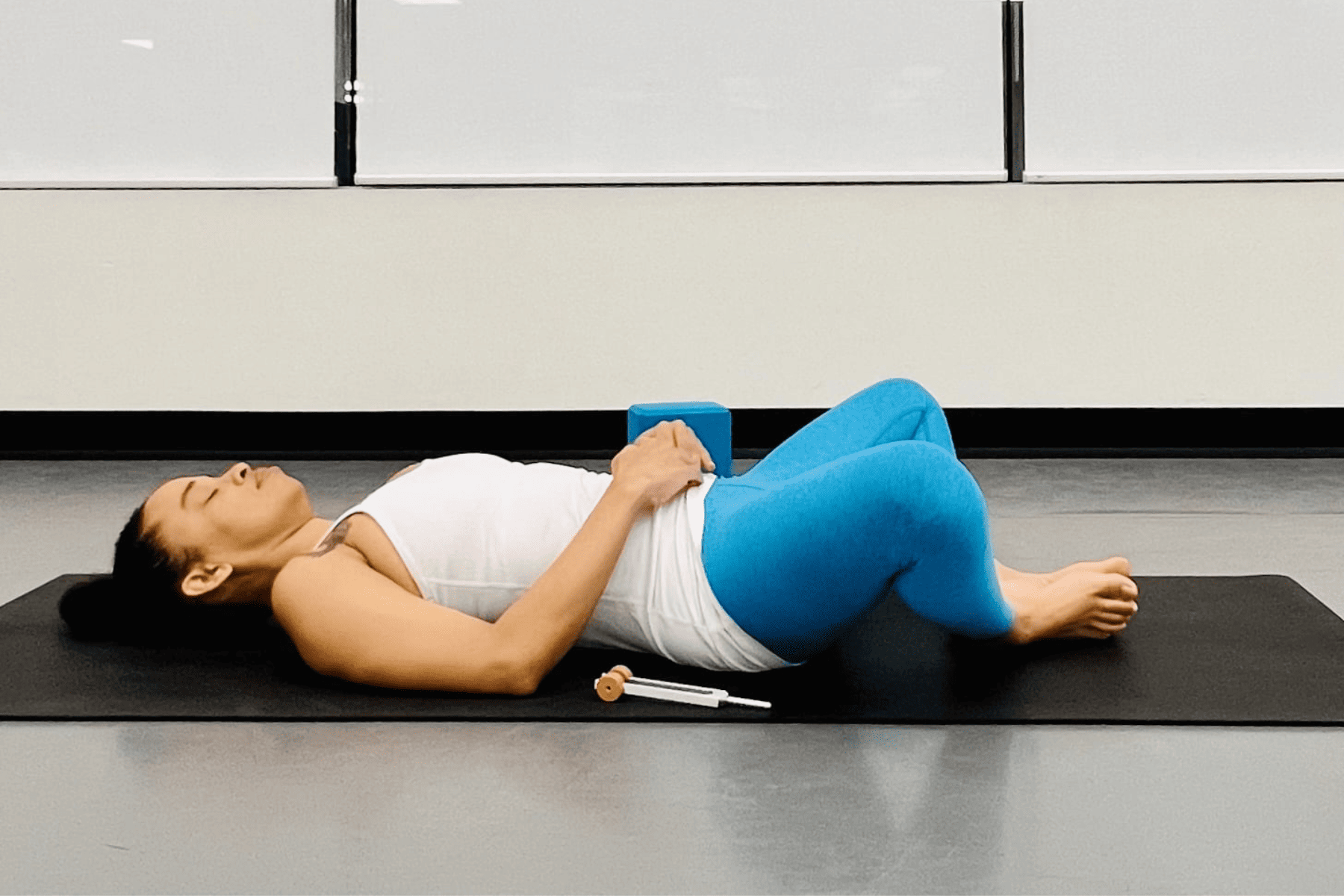
The Lower Dantian
SUPPORTED BRIDGE STIMULATING HEART 8 (HT 8 Lesser Palace)
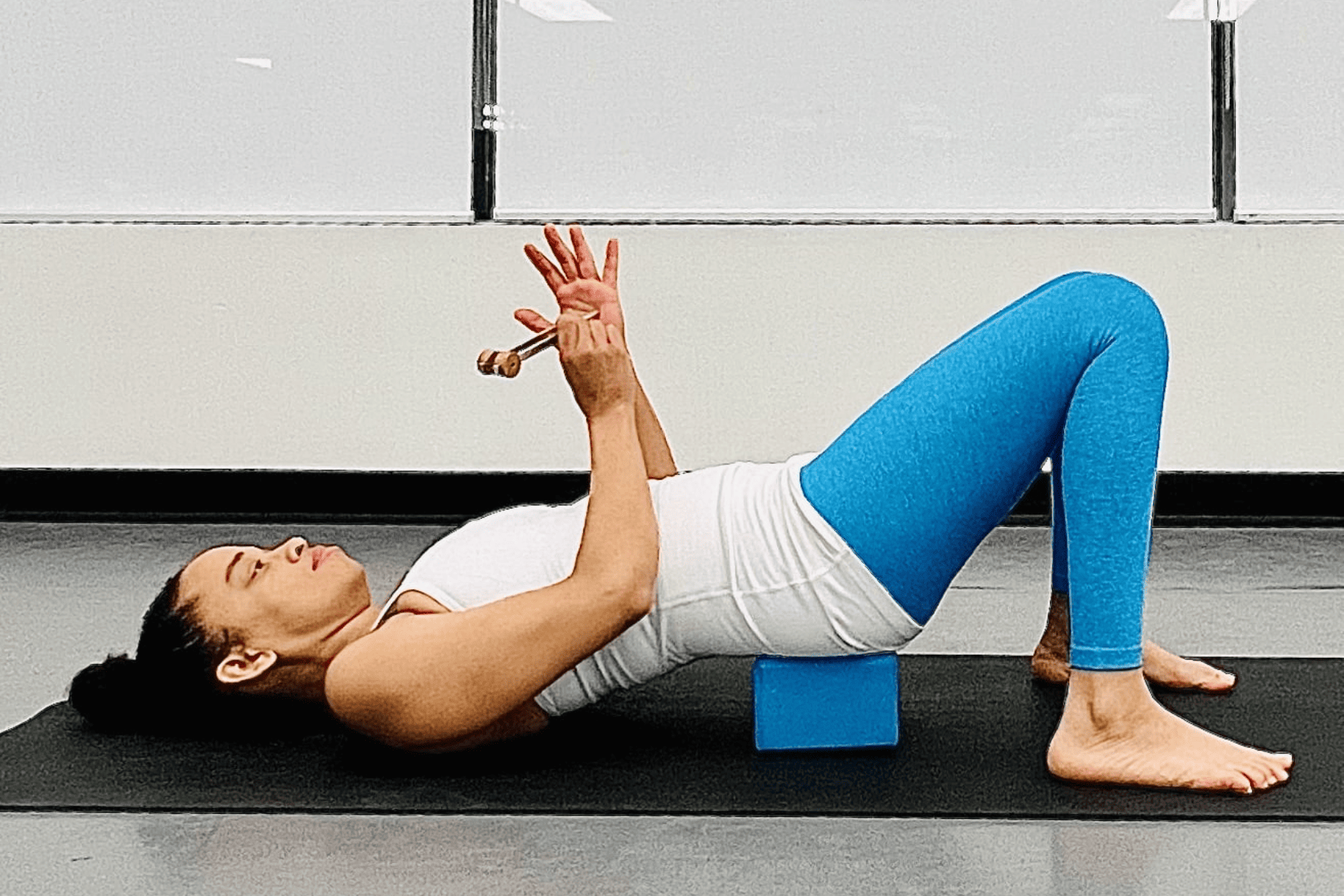
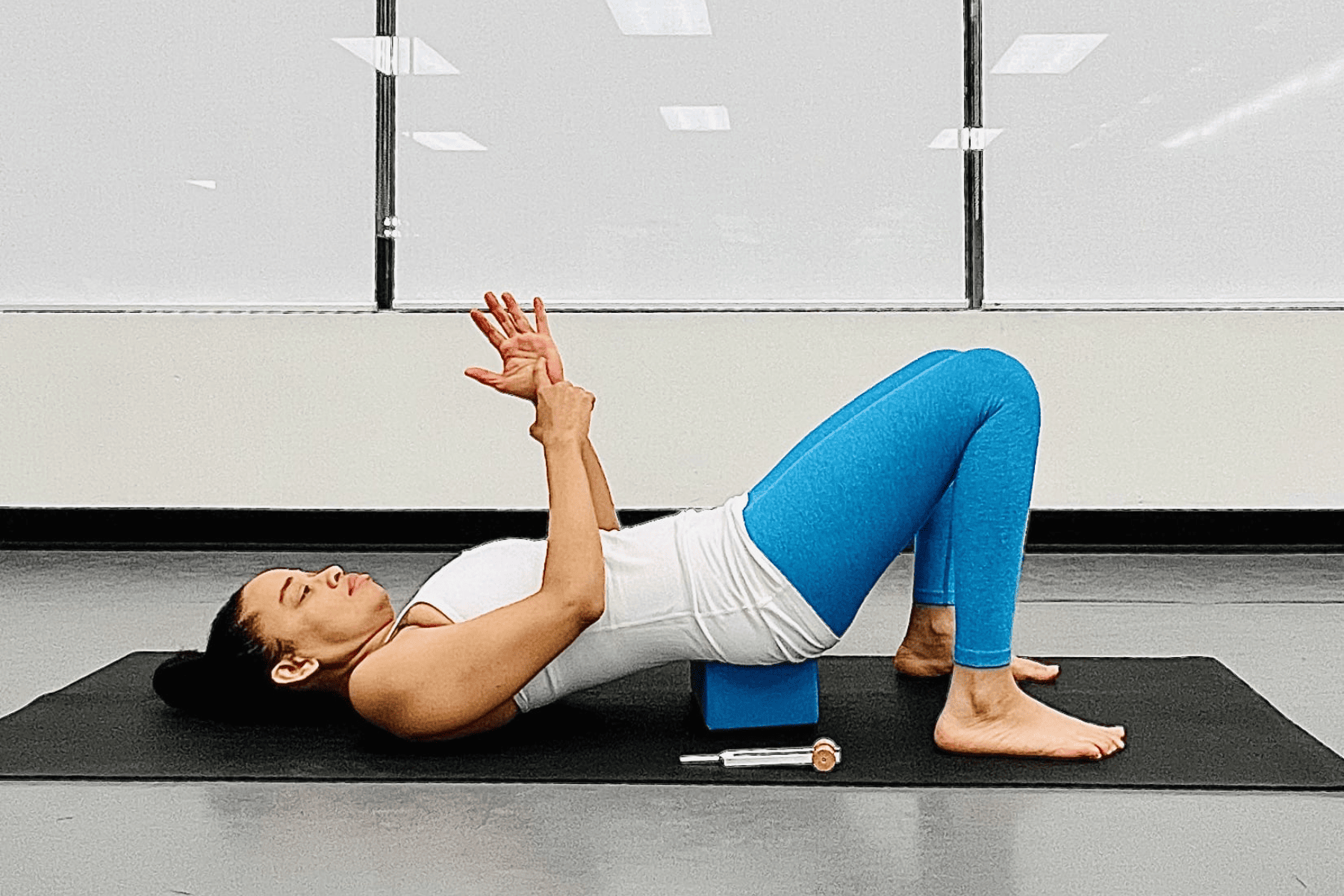
The Acupuncture Point HEART 8 ( Lessor Palace/ HT 8):
In Traditional Chinese Medicine the kidneys and the heart form a fundamental relationship in the body- the relationship of fire and water. The water element in the body nourishes, and moistens the body while the fire element warms and activates. Fire is needed to balance water and water is needed to balance the energies of fire. Heart 8 is the fire point on the heart meridian. It calms the heart and mind and helps purify the heart so it can better balance kidney function.
The Pose:
Start lying on your back with your knees bent. Lift your hips off the floor and place a block or blocks under your sacrum. Have the block at its’ widest surface under your sacrum. Your sacrum is the large triangular bone at the base of your spine. Notice the intensity of your pose. There should only be a mild compression in your lower back. Restorative poses are mild in intensity. Keep your legs bent with your feet flat on the floor, or to increase the intensity of your posture straighten your legs. Once you are fully in the pose stimulate HT 8 using either a tuning fork or acupressure. Three rounds of vibration with the fork (each about 20 seconds long or until the vibration in the fork is no longer felt) is sufficient stimulation. If you are tapping on the point do so for about 1 to 2 minutes. There should be no sharp or tingling sensations in any posture. Relax for the remainder of the pose. Stay in supported bridge for approximately 3 to 5 minutes. To come out of the pose move the feet in towards the pelvis if you extended them. Lift your hips, remove the block, and lower your hips to the floor. Draw your knees into the chest for a few seconds before continuing the sequence.
FIGURE 4 POSE STIMULATING KIDNEY 1 ( KI 1 or Bubbling Spring)



